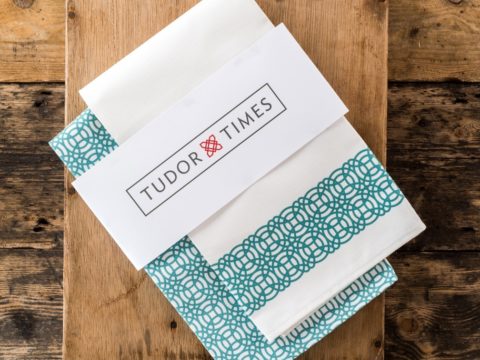John Dudley: Life Story
Chapter 19 : The Devise for the Succession
By the spring of 1552, the evangelicals were pushing for a more radical religious settlement. The half-way house of the 1549 Prayer Book was not good enough for them. There was some pressure on Archbishop Cranmer to go further – it was all he could do to insist that the tradition of kneeling to take Communion should be retained as a sign of respect, not of acceptance of the doctrine of transubstantiation.
The presence of John Knox, the radical Scottish reformer, influenced the English court. Northumberland wished to offer him a bishopric, and was stunned when it was refused because it would have required more compromise with ‘idolatry’ than Knox was willing to make.
That April, Edward fell sick. He recovered sufficiently to resume his normal routine, and even to go on his first progress outside London. Modern medical theory, however, suggests that whatever the illness was, it fatally undermined his health. Northumberland too, was ill. His symptoms sound like those of severe stress – stomach ailments, depression, and sleeplessness. As so often with those who strive for power, it proved less attractive in the reality, than it had seemed in the prospect.
There was a constant rumble of disaffection with Northumberland’s position. He had also to realise that he had created a monster in the constant demands for money and land of his supporters. The country was close to bankruptcy, and could not even raise debt in the money markets of Flanders at a return of 16%.
Northumberland’s depression lingered. The Christmas of 1552 was celebrated with the usual enthusiasm, but the Duke wrote to Cecil about his ‘weary body’ and the fact that ‘no man scarcely had any good opinion of [him]’.
In February 1553, perhaps sensing that Edward’s health was not as robust as it had once been, the Council sought a rapprochement with the Lady Mary. She was invited to London and met by the Duke himself at the city gates. She was treated with an honour and respect she had not received since the mid-1520s when, as a little girl, she had been known as the Princess of Wales.
Edward’s health was deteriorating. He was bedridden for some weeks with a cold, and there were reports of fever and breathing difficulties. He recovered sufficiently to open Parliament on 1st March, but it was becoming obvious that he would not make old bones. He retired to Greenwich in the hopes of recuperating there.
The King, whether he knew he was dying or not, drew up a document that he called his ‘Devise for the Succession’. In it, he sought to overturn both the Act of Succession of 1544 and his father’s will, by expunging both his half-sisters from the succession, on the grounds that, not only were they illegitimate, but that they might marry out of the kingdom. As a true Tudor male chauvinist, he also tried to exclude all women from the crown by nominating as his heir, the heirs male of his cousin, Frances, Duchess of Suffolk.
There was an obvious drawback in this plan - the Duchess only had three daughters, Jane, Katherine and Mary Grey, none of whom had sons, and the oldest of whom was barely sixteen. Since Lady Suffolk was unlikely to have more children, it seemed obvious that the Ladies Jane and Katherine should be married as soon as possible – obviously to good Protestants.
It just so happened that Northumberland and his ally, Pembroke (brother-in-law to the late Katherine Parr), had two sons of suitable age, whilst the son of a more distant, but male, member of the royal family, Henry Hastings, was just right for Northumberland’s daughter, Lady Katherine Dudley.
The renowned historian, the late Professor Ives, suggested in his book ‘Lady Jane Grey: A Tudor Mystery’ that these marriages were no more than the usual bartering amongst nobles, but the vast majority of observers, both then and now, have assumed that Northumberland, even if he did not encourage Edward in his Devise, with the possibility of such a marriage in mind for his son, certainly leapt at the opportunity when it was presented.
A few days after the wedding of Lord Guilford Dudley to Lady Jane Grey, the King, visibly failing, amended his Devise to leave the Crown to any heirs male born to Lady Suffolk before his death, or else to Lady Jane, to be followed by her heirs male.
He then demanded that the Judges of the King’s Bench turn the document into a will. The Judges, mindful that the Act of 1544 made it treason for anyone to interfere or try to overturn its provisions, refused. Northumberland exploded in fury, and accused the Lord Chief Justice of treason. No conclusion was reached – the Duke angrily spurning the suggestion that Mary’s rights be preserved on condition she agreed to maintain the current religious settlement.
Edward, too, was incandescent with rage. He demanded instant obedience. Eventually, having been promised a pardon under the Great Seal, the Lord Chief Justice gave way. A will was drawn up giving effect to the King’s wishes, and it was signed by the King himself, Northumberland and the Council – including Arundel, reluctantly, and Pembroke.
Archbishop Cranmer initially refused, but was talked around on the promise that further religious reforms he advocated would be implemented. Others who were uncomfortable with the Letters Patent were the Earls of Bedford, Winchester and Shrewsbury.
Sir John Dudley
Family Tree




